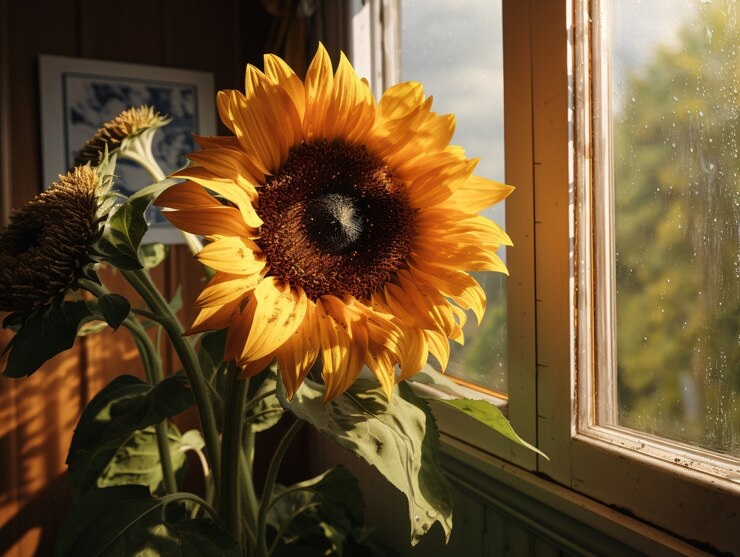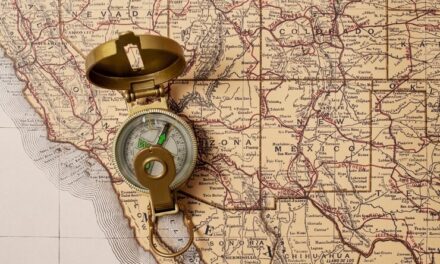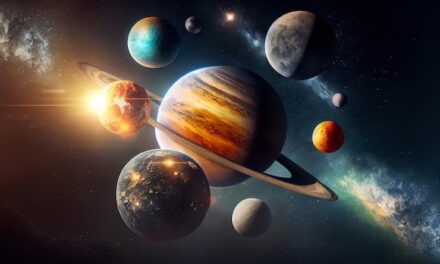When we look around us, we see a world filled with an incredible variety of objects and beings. Some of these, like trees, birds, and people, are alive. Others, like rocks, water, and air, are not alive. Understanding the difference between living and non-living things is fundamental to our study of science and our comprehension of the world around us.
In this chapter, we’ll explore the characteristics that define living things and how they differ from non-living things. We’ll delve into the fascinating world of biology, examining the key features that all living organisms share, from the tiniest bacteria to the largest whales.
Common Features of Living and Non-living Things
Before we dive into the differences, let’s consider some features that both living and non-living things can share:
- Occupying space: Both living and non-living things take up space in our environment.
- Having mass: All matter, whether living or non-living, has mass.
- Made of atoms: At the most basic level, all things are composed of atoms.
- Can change over time: Both can undergo changes, though the nature of these changes differs.
Differences Between Living and Non-living Things
While there are some similarities, the differences between living and non-living things are significant:
- Growth and development: Living things grow and develop; non-living things do not.
- Reproduction: Living things can reproduce; non-living things cannot.
- Metabolism: Living things have metabolic processes; non-living things do not.
- Response to stimuli: Living things react to their environment; non-living things do not.
- Adaptation: Living things can adapt to their environment over time; non-living things cannot.
- Cellular structure: Living things are made of cells; non-living things are not.
Now, let’s explore the characteristics of living things in more detail.
Characteristics of Living Things
-
They Move
All living things have the ability to move, though this movement can take many forms. Some organisms, like animals, can move their entire bodies from one place to another. This is called locomotion. Other organisms, like plants, may not move their entire bodies but still exhibit movement in various ways.
Examples:
– Animals: A cheetah sprinting across the savanna, a fish swimming in the ocean, or a bird soaring through the sky are all obvious examples of movement in living things.
– Plants: While plants don’t move from place to place, they do exhibit movement. Sunflowers turn their heads to follow the sun throughout the day. Venus flytraps snap shut when an insect lands on them. Roots grow downward into the soil, while stems grow upward towards light.
– Microorganisms: Even tiny living things move. Bacteria can swim using flagella, and amoebae move by extending pseudopods.
-
All Living Things are Made Up of Cells
Cells are the basic unit of life. All living organisms, from the simplest to the most complex, are composed of one or more cells. These microscopic structures carry out all the functions necessary for life.
Examples:
– Unicellular organisms: Bacteria, amoebae, and some algae are examples of organisms made up of a single cell. Despite their simplicity, these cells perform all life functions within their tiny bodies.
– Multicellular organisms: Plants, animals, and fungi are made up of many cells working together. In humans, for instance, there are trillions of cells, each with a specific role. Skin cells protect our bodies, muscle cells allow us to move, and nerve cells transmit signals.
– Cell specialization: In complex organisms, cells specialize to perform specific functions. For example, red blood cells in humans are specialized for carrying oxygen, while neurons are specialized for transmitting electrical signals.
-
Living Things Grow
Growth is a fundamental characteristic of all living things. As organisms develop, they increase in size and complexity.
Examples:
– Plants: A tiny seed can grow into a towering tree. As it grows, it develops roots, stems, leaves, and eventually flowers or fruit.
– Animals: A human baby weighs about 3 kg at birth but can grow to over 60 times that weight as an adult. This growth involves not just an increase in size but also the development of complex organ systems.
– Unicellular organisms: Even single-celled organisms grow. When a bacterium reaches a certain size, it divides into two cells, each of which then grows to full size.
-
Living Things Have a Definite Lifespan
All living things have a life cycle – they are born (or germinate), they develop, and eventually, they die. The length of this lifespan varies greatly among different species.
Examples:
– Mayfly: Some species of mayfly have one of the shortest lifespans, living for only 24 hours as adults.
– Humans: The average human lifespan is about 79 years, though some individuals live well over 100 years.
– Bristlecone Pine: These trees are among the longest-living organisms, with some specimens estimated to be over 5,000 years old.
– Bacteria: In ideal conditions, some bacteria can divide every 20 minutes, creating a new generation.
-
Living Things Reproduce
Reproduction is the process by which living things create new individuals of their own kind. This ensures the continuation of the species.
Examples:
– Sexual reproduction: Many plants and animals reproduce sexually, combining genetic material from two parents. This includes humans, most mammals, and flowering plants.
– Asexual reproduction: Some organisms can reproduce without a partner. Strawberry plants can send out runners that develop into new plants. Many single-celled organisms reproduce by dividing into two identical cells.
– Spore production: Fungi and some plants reproduce by producing spores, which can grow into new organisms under the right conditions.
-
Living Things Respond to Stimuli
One of the most fascinating characteristics of living things is their ability to respond to changes in their environment. These changes, called stimuli, can be external (from the environment) or internal (from within the organism). The reaction to a stimulus is called a response.
Stimuli can be of various types, including light, temperature, sound, touch, and chemical signals. The ability to respond to stimuli is crucial for survival, allowing organisms to find food, avoid dangers, and adapt to changing conditions.
Phototropism is a response to light stimulus seen in plants. It’s the tendency of plants to grow towards or away from light. For example, when you place a houseplant near a window, you might notice that its stems and leaves gradually bend towards the light source. This is positive phototropism, and it helps plants maximize their exposure to sunlight for photosynthesis. Conversely, roots often exhibit negative phototropism, growing away from light and into the soil where they can absorb water and nutrients.
Geotropism, also known as gravitropism, is the response of plants to gravity. It plays a crucial role in determining the direction of growth for roots and shoots. Roots typically display positive geotropism, meaning they grow downward in response to gravity. This ensures that roots grow into the soil where they can anchor the plant and absorb water and nutrients. On the other hand, shoots and stems usually exhibit negative geotropism, growing upward against the force of gravity. This allows leaves to reach sunlight and flowers to be positioned for pollination.
Examples of responses to stimuli:
– Touch-sensitive plants: The Mimosa pudica, also known as the “sensitive plant,” quickly folds its leaves when touched. This is a defense mechanism against potential predators.
– Sunflower tracking: Young sunflowers track the movement of the sun across the sky, a response called heliotropism. This maximizes their exposure to sunlight.
– Animal migration: Many birds, butterflies, and whales migrate long distances in response to changing seasons, a complex response to environmental stimuli including temperature and day length.
– Human reflexes: When you touch something hot, you quickly pull your hand away. This rapid, involuntary response helps prevent injury.
-
Living Things Need Food
All living things require energy to carry out life processes. This energy is obtained from food. However, the way organisms obtain and use food varies.
Autotrophs, also known as producers, are organisms that can produce their own food using inorganic substances and an energy source like sunlight or chemical reactions. Plants are the most common autotrophs, using sunlight, carbon dioxide, and water to produce glucose through photosynthesis. Other examples include some bacteria and algae.
For instance, phytoplankton in the ocean are microscopic autotrophs that form the base of many marine food chains. They use sunlight to produce their own food, supporting a vast array of marine life above them in the food web.
Heterotrophs, on the other hand, cannot produce their own food and must obtain energy by consuming other organisms or organic matter. This category includes all animals, fungi, and many microorganisms. Heterotrophs can be further classified based on their diets:
– Herbivores eat only plants (e.g., rabbits, cows)
– Carnivores eat other animals (e.g., lions, eagles)
– Omnivores eat both plants and animals (e.g., humans, bears)
– Detritivores feed on dead organic matter (e.g., earthworms, some beetles)
For example, a squirrel foraging for nuts and seeds is a heterotroph obtaining energy from food sources in its environment. Similarly, a mushroom decomposing fallen leaves is a heterotroph, albeit one that obtains its nutrients in a very different way from the squirrel.
-
Living Things Excrete
Excretion is the process by which living things remove waste products from their bodies. These waste products are generated as a result of various metabolic processes.
Plants, like all living things, need to get rid of waste products. This process is called excretion. Unlike animals, plants don’t have special organs for excretion. Instead, they have clever ways to deal with waste. For example, some plants store waste chemicals in their leaves. When autumn comes, these leaves fall off, taking the waste with them. Other plants release excess water through tiny pores in their leaves called stomata. This process is known as transpiration. Some waste gases, like oxygen produced during photosynthesis, are released through the stomata too. Plants can also excrete waste into the soil through their roots. Some trees even excrete substances through their bark to protect themselves from insects and diseases. Other plant secretions include nectar, which attracts pollinators, and resin, which can protect the plant from insect attacks.
In animals, excretion is more complex. Mammals, for instance, use specialized organs like kidneys to filter waste from the blood, which is then expelled as urine. Carbon dioxide, a waste product of respiration, is exhaled through the lungs.
Examples:
– Human sweat glands excrete excess water and salts to help regulate body temperature.
– Birds excrete uric acid as a white, pasty substance to conserve water.
– Single-celled organisms like amoebae use contractile vacuoles to expel excess water and wastes.
-
Living Things Respire
Respiration is the process by which living things break down nutrients to release energy for life processes. It occurs in all living cells, although the specific process can vary between organisms.
Respiration in Plants:
Plants, like all living organisms, need energy to survive and grow. They get this energy through a process called respiration. In plants, respiration happens all the time, day and night. During this process, plants take in oxygen from the air through tiny pores in their leaves called stomata. They use this oxygen to break down glucose (a type of sugar) that they made during photosynthesis. This breakdown releases energy that the plant uses for various activities like growing, producing flowers, and repairing damage. As a result of respiration, plants release carbon dioxide and water vapor back into the air through the stomata.
It’s important to note that while photosynthesis only happens in the presence of light, respiration occurs continuously. At night or in dark conditions, plants only perform respiration, which is why you might have heard that it’s not good to keep plants in your bedroom at night – they’re using up oxygen just like we do!
Example of Respiration in Plants:
Let’s take a common houseplant like a peace lily (Spathiphyllum) as an example. During the day, this plant performs photosynthesis, creating glucose. At night, or when placed in a dark room, it uses this glucose for respiration. If you were to place a peace lily in a sealed clear container overnight, you’d see water droplets form on the inside of the container by morning. This is partly due to the water vapor released during respiration.
Another example is a fast-growing plant like bamboo. Bamboo can grow up to 91 cm (36 inches) in a single day! This rapid growth requires a lot of energy, which the plant gets through constant respiration.
Respiration in Animals:
In animals, including humans, respiration is a bit different from plants but serves the same purpose – to provide energy. Animals breathe in oxygen through specialized organs. In humans and many other animals, these are lungs. Fish use gills, while insects breathe through tiny tubes called tracheae.
Once oxygen enters the body, it’s carried by the blood to all the cells. Inside each cell, oxygen is used to break down glucose in a process called cellular respiration. This releases energy that animals use for everything they do – from running and playing to growing and thinking. Just like plants, animals produce carbon dioxide and water as waste products of respiration. These are then expelled from the body, usually through the same organs used for breathing in.
An interesting fact is that some animals, like certain types of bacteria, can perform respiration without oxygen. This is called anaerobic respiration and often produces less energy than the oxygen-using (aerobic) respiration.
Example of Respiration in Animals:
Let’s consider a dog as an example. When a dog runs to catch a ball, you can see its respiration rate increase. It starts panting, breathing in more oxygen to power its muscles. This oxygen is used in the cells to break down glucose, providing energy for the dog’s muscles to keep running.
In humans, you can observe respiration by watching your chest rise and fall as you breathe. Try taking a deep breath and then holding it. You’ll soon feel the urge to breathe again – that’s your body demanding more oxygen for respiration.
For an example of anaerobic respiration in animals, consider the case of a sprinter in a 100-meter race. During this short, intense burst of activity, the muscles can’t get enough oxygen quickly, so they temporarily switch to anaerobic respiration. This produces lactic acid, which causes the burning sensation in muscles after intense exercise.
Comparing Plant and Animal Respiration:
While the basic purpose of respiration – to produce energy – is the same in both plants and animals, there are some key differences:
- Plants don’t have specialized organs for respiration like animals do. They use stomata in leaves and pores in roots and stems.
- Plants produce their own food (glucose) through photosynthesis, which they then use in respiration. Animals, on the other hand, must obtain their glucose by eating plants or other animals.
- In plants, each cell performs respiration independently. In most animals, the respiratory system works together with the circulatory system to deliver oxygen to cells and remove carbon dioxide.
Imagine a closed terrarium containing small plants and tiny animals like insects. This miniature ecosystem demonstrates the balance between plant and animal respiration. The plants produce oxygen during photosynthesis, which the insects use for respiration. In turn, the insects produce carbon dioxide, which the plants use for photosynthesis. The water in the terrarium cycles between the plants, animals, and the terrarium atmosphere, partly through the process of respiration.
An interesting example that connects plant and animal respiration is the pitcher plant. This carnivorous plant traps insects in its pitcher-shaped leaves. It then digests these insects and uses the nutrients for growth and respiration, much like an animal would.
Species
A species is a group of living organisms that can interbreed and produce fertile offspring. This concept is crucial in biology as it helps us classify and understand the diversity of life on Earth.
The number of species on Earth is vast and not fully known. Scientists have described and named about 1.9 million species, but estimates of the total number of species range from 8.7 million to over 1 trillion. This wide range reflects the difficulty in counting species, especially in hard-to-reach environments like the deep ocean or tropical rainforest canopies.
Examples of species:
– Homo sapiens (modern humans)
– Canis lupus familiaris (domestic dogs)
– Quercus alba (white oak tree)
– Escherichia coli (a type of bacteria)
Understanding species is important for many reasons, including conservation efforts, studying evolution, and managing ecosystems. The concept of species reminds us of the incredible biodiversity on our planet and the interconnectedness of all living things.
Conclusion
Living things are complex and diverse, yet they all share certain fundamental characteristics. From the tiniest bacteria to the largest whale, all living organisms move, are made of cells, grow, have a lifespan, reproduce, respond to stimuli, need food, excrete wastes, and respire. Understanding these characteristics not only helps us distinguish between living and non-living things but also appreciate the intricate processes that make life possible.
The worksheet covers the following topics-
Introduction on living and non-living
Common features of living and non-living things
Differences between living and non-living
Characteristics of living things- they move
All living things are made up of cells
Living things grow
Living things have a definite lifespan
Living things reproduce
Living things respond to stimuli- explain what is response, stimuli, phototropism, geotropism,
Living things need food- autotrophs, heterotrophs
Living things excrete – stomata, secretions
Living things respire- respiration
Species-what are species, how many
Image Courtesy- Freepik.com
| Organism | Average Lifespan |
|---|---|
| Human | 70-80 years |
| Elephant | 60-70 years |
| Dog | 10-13 years |
| Cat | 12-18 years |
| Goldfish | 10-15 years |
| Parrot | 50-60 years |
| Rabbit | 8-12 years |
| Hamster | 2-3 years |
| House Mouse | 1-2 years |
| Horse | 25-30 years |
| Cow | 18-22 years |
| Chicken | 5-10 years |
| Tortoise | 100-150 years |
| Honey Bee (Worker) | 5-7 weeks |
| Queen Bee | 2-3 years |
| Monarch Butterfly | 6-8 months |
| Frog | 10-12 years |
| Lobster | 40-50 years |
| Bald Eagle | 20-30 years |
| Whale (Blue) | 80-90 years |

















